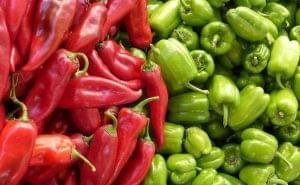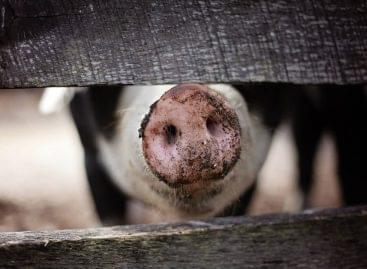The crisis of spicy peppers: declining production and growing challenges
The Szeged spice paprika, once a pride of Hungarian gastronomy and agriculture, is now facing serious challenges. Weather extremes, rising costs and import pressure all contribute to the fact that production and the area under cultivation are decreasing year by year. According to Anita Molnár, the managing director of PaprikaMolnár Kft., the situation could worsen further if no meaningful intervention is made – writes Telex.
Weather and economic challenges
 In 2024, the July heat wave and drought caused significant damage to the Szeged pepper fields. The pepper, which is a water-intensive crop, did not receive sufficient irrigation in many places, as the farmers’ water supply from wells was exhausted. Although the rains that arrived in early autumn could have improved the situation, the second harvest did not bring satisfactory results either. PaprikaMolnár Kft., which grows peppers on more than one hectare, was forced to replace the missing crop from other farmers and buyers in order to maintain its operations.
In 2024, the July heat wave and drought caused significant damage to the Szeged pepper fields. The pepper, which is a water-intensive crop, did not receive sufficient irrigation in many places, as the farmers’ water supply from wells was exhausted. Although the rains that arrived in early autumn could have improved the situation, the second harvest did not bring satisfactory results either. PaprikaMolnár Kft., which grows peppers on more than one hectare, was forced to replace the missing crop from other farmers and buyers in order to maintain its operations.
The high costs of production also pose a serious burden for the company. Due to the drastic increase in gas prices, the company was forced to limit its drying activities in 2022, which further aggravated the situation.
Decreasing production area and number of farmers
According to data from the Central Statistical Office, the area under spice peppers was 9 thousand hectares in 1990, but today there are barely 1,000 hectares left. The yield has also decreased significantly: in 2000, 31 thousand tons were harvested, while in 2023 only 8 thousand tons.
According to Anita Molnár, the cultivation of spice peppers is now less attractive to the younger generation. Older farmers are increasingly retiring and younger ones are turning to other, more profitable activities. Attracting new growers is difficult, as growing peppers is manual labor-intensive and its profitability is unpredictable.
Related news
Apples have become significantly more expensive in Hungary
🎧 Hallgasd a cikket: Lejátszás Szünet Folytatás Leállítás Nyelv: Auto…
Read more >KSH: industrial production decreased by 2.7 percent in October compared to the same period of the previous year, and increased by 0.5 percent compared to the previous month
🎧 Hallgasd a cikket: Lejátszás Szünet Folytatás Leállítás Nyelv: Auto…
Read more >The price of slaughter pigs has decreased in Hungary and in the EU
🎧 Hallgasd a cikket: Lejátszás Szünet Folytatás Leállítás Nyelv: Auto…
Read more >Related news
(HU) Idei győztes sorrend: Grand Automotive East, Tesco Magyarország, Nestlé Hungária
🎧 Hallgasd a cikket: Lejátszás Szünet Folytatás Leállítás Nyelv: Auto…
Read more >Bagels, stuffed cabbage and online scams – this could be the Christmas menu for many due to the rise in cybercrime
🎧 Hallgasd a cikket: Lejátszás Szünet Folytatás Leállítás Nyelv: Auto…
Read more >25,000 packages of donations will reach people in need as a result of the 2025 Joy of Giving! fundraising campaign
🎧 Hallgasd a cikket: Lejátszás Szünet Folytatás Leállítás Nyelv: Auto…
Read more >






